Make clothes last longer: Ultimate guide to care and maintenance
Extending the life of your clothes isn’t just about saving money; it’s about reducing waste and keeping your favorite pieces looking their best. Whether you’re a fashion enthusiast or simply want to get the most out of your wardrobe, this guide is for you. From the moment you buy a garment to washing, storing, and mending, we’ll cover simple yet effective strategies. Learn how to combat fading, shrinking, pilling, and shape loss, ultimately minimizing your environmental impact and maximizing your clothing investment.
1. Choosing Clothes for Longevity
1.1 Prioritize Quality over Quantity
Investing in high-quality, sustainable clothes is a cornerstone of longevity. Garments built with superior materials and construction techniques offer enhanced durability and preservation.
While the upfront cost might be higher, remember that wardrobe staples will outlast trend-focused, cheaper alternatives. This reduces the need for frequent replacements, ultimately saving you money in the long run.
Consider the “cost per wear.” A $100 sweater worn 100 times costs $1 per wear. Conversely, a $20 sweater worn only five times costs $4 per wear. The higher-quality item provides better value, and enhanced durability. Prioritizing quality is a key step toward a lasting wardrobe.
Choosing high quality will bring to you a wardrobe can be used for long time. And you don’t need to waste your time in choosing and buying new clothes usually.
1.2 Smart Fabric Selection
The fabric of your clothing significantly impacts its lifespan. Materials like cotton, linen, wool, and some high-quality synthetics like Tencel or recycled polyester are excellent choices for durability.
For example, cotton’s breathability and easy-to-wash makes it suitable for daily use, and wool is durable and naturally resists odors, Linen becomes stronger when wet.
Fabric care is also easier for durable fabrics. Consider fabric weight. Heavier-weight materials, such as denim with a high weave density, generally last longer than lighter ones. A heavier denim will outlast a lightweight chambray. Thread count can also give you clues about a fabric’s strength and smoothness.
Blends often combine the best qualities of different fibers. A cotton-polyester blend, for instance, can offer both breathability and wrinkle resistance.
Making informed fabric choices is crucial for ensuring the longevity of your garments. Therefore, pay attention to the details of the fabric to choose the right one.
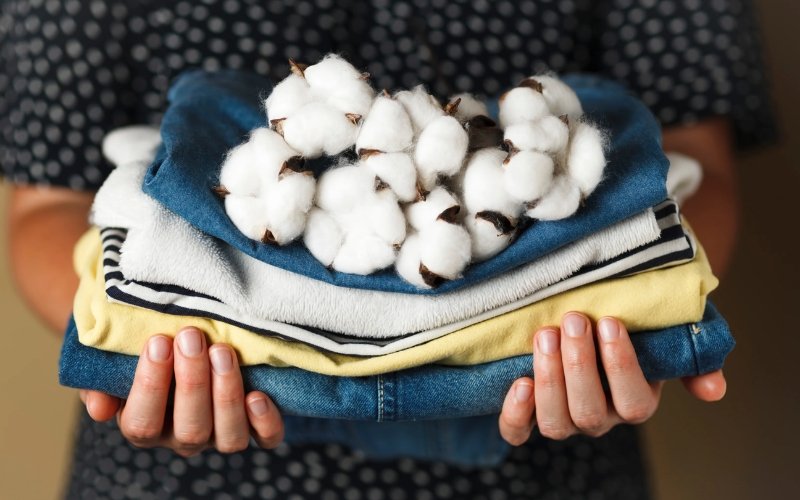
1.3 Pre-Washing Fabrics (Primarily for Sewers)
This part mainly for people who make their clothes. If you sew your own clothes, pre-washing fabric is essential for shrinkage prevention. Washing the fabric before cutting and sewing prevents the finished garment from shrinking unexpectedly after its first wash, which could ruin the fit.
Different fabrics require different pre-washing methods. Generally, wash and dry the fabric as you intend to care for the finished garment. For example, wash cottons in warm water and tumble dry, while delicates like silk might need hand-washing and air-drying.
This crucial step ensures that your handmade creations maintain their intended size and shape. Don’t skip this step, or you can waste your time and material. Pre-wash your fabric and keep your clothes in good condition.
2. Washing Techniques to Extend Clothing Life
2.1 The Less is More Approach to Washing
Washing less frequently is one of the best ways to protect your clothes. Excessive washing wears down fibers, causing fading, pilling, and loss of shape. Try to wear clothes at least three times before washing them, unless they are heavily soiled.
Instead of automatically tossing items into the laundry basket, consider airing them out or spot-cleaning minor stains. This simple habit significantly reduces wear and tear. Choose gentle cycle if you need to use washing machine. Air dry is better for your clothes.
This “less is more” approach not only extends the life of your clothes but also saves water and energy. You can protect your clothes just by reduce the frequency of washing.
2.2 Immediate Stain Treatment
Effective stain removal starts with speed. The longer a stain sits, the harder it is to remove. Treat stains immediately by rinsing the affected area under cold water. Avoid hot water, which can set many stains, particularly oil-based ones.
For specific stains, use an appropriate stain remover, following the product’s instructions. Different stain types require different approaches. For example, treat oil stains with a degreasing agent, while ink may require rubbing alcohol.
Acting quickly and using the right techniques can prevent permanent damage. Remember to check the garment’s care label before applying any stain remover.
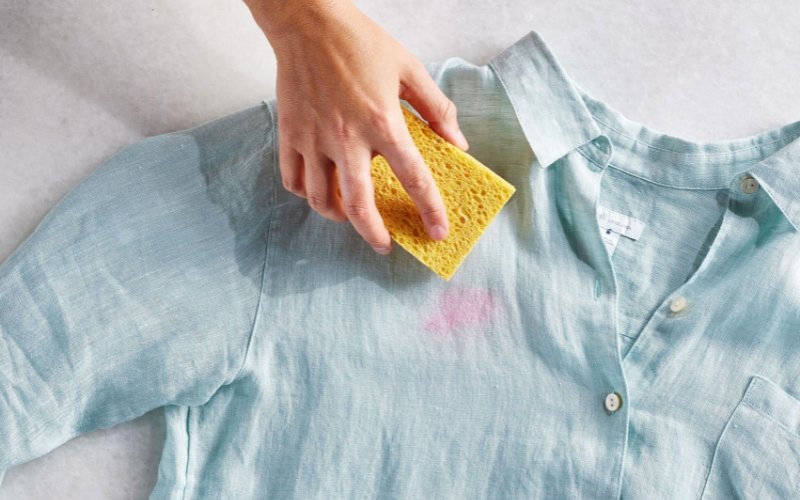
2.3 Sorting Laundry for Optimal Care
Sort your laundry carefully to protect your clothes and ensure effective cleaning. Separate whites from darks to prevent color bleeding. Keep heavy fabrics from lighter ones to avoid damage to delicate items.
Separate soiled clothes from lightly worn items. Heavily soiled clothes may require a longer, more intense wash cycle, while lightly soiled items can be cleaned on a shorter, gentler cycle.
This simple step prevents color transfer, damage, and ensures each item receives the appropriate level of cleaning. Sorting your laundry makes sure all clothes are clean.
2.4 Mastering the Wash Cycle
Always follow label instructions on your garments. These washing instructions provide crucial information about water temperature, drying methods, and ironing. Pay close attention to the symbols, as they indicate the manufacturer’s recommendations for optimal care.
Use cold water wash and a gentle cycle for most items. Hot water can cause fading and shrinkage, while harsh cycles can damage fibers. And remember to use less detergent than recommended.
Consider natural laundry detergents, which are gentler on both fabrics and the environment. Choosing the right detergent and wash cycle is crucial for preserving your clothes.
2.5 Protecting Delicates
Use mesh laundry bags, such as a Guppyfriend or delicates bag, to protect delicate items during the wash cycle. These wash bag prevent snagging, stretching, and tangling, especially for lingerie, lace, and items with embellishments.
Place delicate items inside the bag before adding them to the washing machine. This simple step provides an extra layer of protection, minimizing wear and tear during the wash.
By using mesh bags, you can confidently wash delicate items without worrying about damage.
2.6 Special Care for Dark Clothes and Denim
To prevent color fading, always wash dark clothes inside out in cool water. This simple technique minimizes the abrasion and exposure that can lead to fading.
Use a detergent specifically formulated for dark colors. These detergents often contain color-guard ingredients that help maintain the vibrancy of dark fabrics.
For denim, washing inside out is equally important. It helps preserve the color and finish of the denim, preventing premature wear and tear.
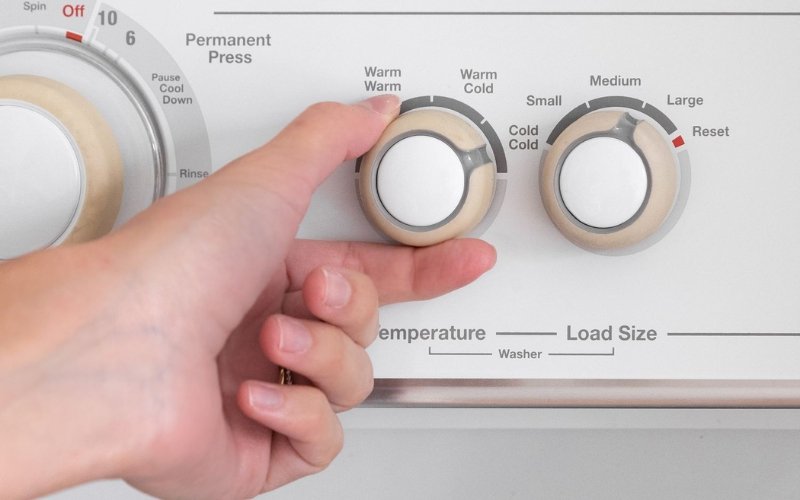
2.7 Minimizing Dry Cleaning
Traditional dry cleaning often uses harsh chemicals that can be harmful to the environment and, over time, can damage fabrics. Avoid dry cleaning whenever possible.
Consider alternatives like a non-toxic professional cleaning service that offers wet cleaning or steam cleaning. These methods are gentler on clothes and the planet.
Many items labeled “dry clean only” can actually be hand-washed or machine-washed on a delicate cycle. Check the fabric content and test a small, inconspicuous area before washing.
3. Drying Clothes Properly
3.1 The Benefits of Air Drying
Air drying is the gentlest and most effective way to dry your clothes, providing superior shrinkage prevention. The high heat from dryers damages fibers, leading to fading, weakening, and changes in shape and size. It’s best to avoid bleach and high heat when drying.
You can air dry clothes indoors and outdoors. Indoors, use a drying rack placed in a well-ventilated area. Outdoors, hang clothes on a clothesline, taking advantage of sunlight and fresh air (but be mindful of direct sunlight on dark colors, which can cause fading).
Good airflow is crucial for effective drying, preventing mildew and ensuring clothes dry evenly. Choose air drying to make your clothes more durable.
3.2 If Using a Dryer, Use Low Heat
If you must use a dryer, always select the lowest heat setting. High heat is the enemy of fabric longevity, causing damage and accelerating wear.
Remove clothes while they are still slightly damp. Over-drying not only damages the fabric but also increases wrinkles and static cling. This also can low heat and save energy.
By using low heat and avoiding over-drying, you can minimize the negative impact of the dryer on your clothes. This is the best way if you need to use a dryer.
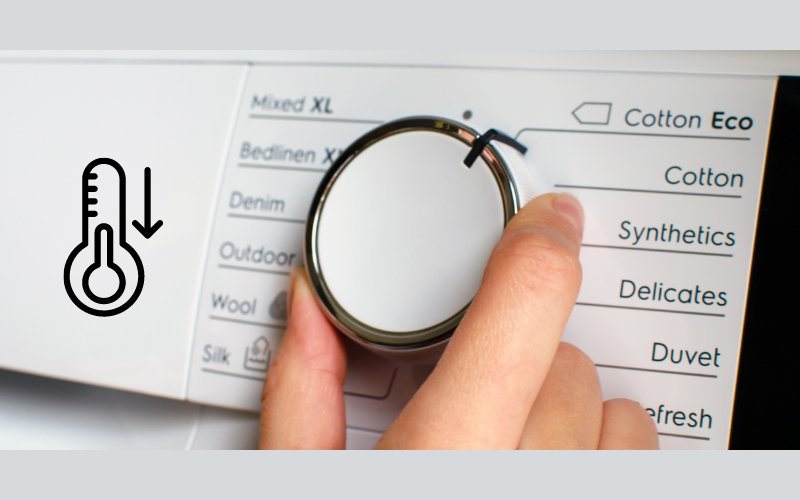
4. Smart Clothing Storage for Longevity
4.1 Creating the Ideal Storage Environment
The foundation of good clothing storage is the environment itself. Always store clothes in a cool dry place. Moisture can lead to mildew and mold, while direct sunlight can cause fading and discoloration.
Ideally, your closet environment should be cool, dry place out of direct sunlight, and well-ventilated. Avoid storing clothes in damp basements or attics with extreme temperature fluctuations.
4.2 Choosing the Right Hangers
Selecting the right clothes hangers is crucial for maintaining the shape of your garments. Avoid thin wire hangers, which can cause stretching and distortion.
Wooden hangers are sturdy and provide excellent support, especially for heavier items like coats and suits. Padded hangers are ideal for delicate fabrics and knitwear, preventing shoulder bumps and stretching.
Using appropriate hangers helps preserve the shape and structure of your clothes.
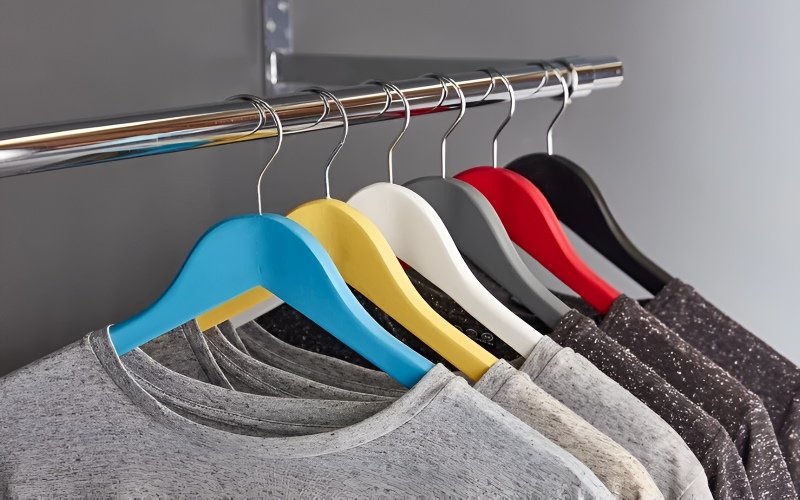
4.3 Folding vs. Hanging
Knowing whether to fold or hang an item is key to preventing damage. Fold sweaters and other knitwear to prevent stretching. Hanging these items can cause them to lose their shape over time.
Hang items prone to wrinkling, such as dresses, blouses, and trousers. Use proper folding techniques to minimize creases when folding items for storage.
This strategic approach helps maintain the integrity of your garments.
4.4 Natural Moth Prevention
Protect your clothes from moths without resorting to harsh chemicals. Repel moths naturally with a variety of effective and pleasant-smelling options.
Lavender sachets, cedarwood chips or cedar blocks, and mint essential oils are all excellent natural repellents. You can also use sachets of cloves, thyme, or rosemary.
These moth prevention methods are safer for your clothes, your health, and the environment.
4.5 Protecting Special Occasion Garments
Preserve your special occasion wear with extra care. Hang occasionwear in canvas garment bags or other breathable garment bags made of cotton.
These garment bags protect against dust, light, and pests while still allowing airflow. This prevents musty odors and keeps your garments in pristine condition.
Avoid plastic bags, which can trap moisture and damage fabrics.
4.6 Maintaining Closet Organization
A well-organized closet is not just aesthetically pleasing; it also benefits your clothes. Keep your closet tidy to promote airflow and prevent items from being crushed or damaged.
Organize your clothes by type and color, making it easier to find what you need and preventing overcrowding. A tidy closet allows air to circulate freely, reducing the risk of mildew and musty odors.
Good organization maximizes space and protects your wardrobe.
4.7 Regular Closet Clean-outs
Have a regular clear-out, ideally at least twice a year. This helps you identify items you no longer wear or need, freeing up space and preventing overcrowding.
Regular clean-outs also allow you to assess the condition of your clothes, catching any minor damage before it becomes a bigger problem.
This practice keeps your closet streamlined and your wardrobe in top shape.
4.8 Preserving Shoe and Bag Shape
Maintain the shape of your shoes and bags, especially when storing them for extended periods. Stuff your shoes & bags with tissue paper, acid-free paper, or shoe trees.
This simple technique helps them retain their shape and prevents creasing and collapsing. It also helps to absorb moisture, preventing damage and odors.
This is an easy way to extend the life of your accessories.
5. Repair, Maintenance, and Upcycling
5.1 Ironing with Care
Proper ironing techniques are crucial for maintaining the appearance and integrity of your clothes. Always check the care label for the recommended temperature setting for each fabric. Using too high a heat can scorch or damage fibers.
Iron clothes correctly by turning them inside out whenever possible. This prevents shine, especially on dark fabrics, and protects any embellishments or prints. Use a pressing cloth for delicate fabrics.
Mastering the basics of iron can make a big difference.
5.2 Regular Clothing Inspections
Practice basic clothing maintenance by regularly inspecting your garments. Every few months, check for loose threads, missing buttons, small tears, or other signs of wear. Catch fray before they spread.
Catching these issues early makes them much easier to repair. A small snag can quickly become a large hole if left unattended. Regular inspections are a simple but effective preventative measure.
5.3 Basic Mending Skills
Learn basic mending techniques to address minor damage and extend the life of your clothes. Sewing on a button, fixing a small seam, or darning a hole are valuable skills that can save you money and prevent garments from ending up in the landfill. Having a sewing kit is necessary.
Numerous online tutorials and resources can guide you through these basic repairs. Stitching will save your clothes. These skills empower you to take control of clothing maintenance.
5.4 Utilizing Professional Tailoring
For more complex repairs or alterations, don’t hesitate to use a tailor. A tailor can professionally fixed or altered your clothes, replacing zippers, repairing damaged linings, or adjusting the fit.
A well-fitting garment is less likely to experience stress and wear, making tailoring a worthwhile investment. This helps your clothes can be fixed. Tailors can often work wonders, restoring damaged items to their former glory.
5.5 Creative Upcycling
Give your clothes a new life and reduce textile waste through upcycling clothes. Repurpose your clothes by transforming old or damaged items into something new and unique.
Turn old jeans into shorts, add patches or embroidery to cover stains, or transform a dress into a skirt or top. Upcycling allows for unique personalization and keeps clothes out of landfills. This is a fun and sustainable way to extend the life of your wardrobe.
6. FAQs about Making Clothes Last Longer
6.1 What is the single most damaging thing I do to my clothes?
Over-washing and using high heat in the dryer are the biggest problems. These actions weaken fabric fibers, leading to fading, shrinkage, and overall wear and tear. Minimizing both is crucial for longevity.
6.2 How often should I really wash my jeans?
Wash your jeans as infrequently as possible. Many experts suggest washing them only every few months, or even longer, unless they are visibly dirty or have an odor. Spot-cleaning and airing them out are better options.
6.3 Can I really fix a hole in my favorite sweater?
Absolutely! Darning is a relatively simple mending technique you can learn online. For larger holes or more complex repairs, a tailor can help restore your sweater.
6.4 What’s the best way to store clothes I’m not currently wearing (seasonal items)?
Thoroughly clean your clothes before storing them. Then, place them in a cool, dry, dark place, ideally in breathable containers like cotton storage bags or garment bags. Avoid plastic containers, which trap moisture.
6.5 Are expensive clothes always better quality?
Not necessarily, although price often reflects quality. Always check the fabric composition, construction details (like stitching and seams), and customer reviews. Don’t rely solely on the price tag.
7. Packlove – Providing service for Making Clothes Last Longer
Packlove offers customized packaging and labeling solutions to help extend the life of your clothes and elevate your brand. Whether you’re a designer, business owner, or simply value your wardrobe, we have products to meet your needs. We can provide products that support you.
- Woven Labels: Add a professional touch and communicate your brand with durable, custom-designed woven labels. Perfect for adding your logo and care instructions to handmade or upcycled clothing, ensuring proper care.
- Heat Transfer Labels: Provide clear, lasting care instructions directly on your garments with our heat transfer labels. This ensures that your customers (or you) know the best way to wash and care for the item, preventing damage.
- Rubber Labels: Add unique branding element and durability.
- Zipper Bags: Offer convenient, reusable storage for individual garments or sets, protecting them from dust and moisture. These are ideal for delicate items or organizing seasonal clothing.
- Poly Mailers: Ship repaired, altered, or upcycled clothing securely and professionally with our durable poly mailers. This ensures safe delivery and a positive customer experience.
Visit our website https://mypacklove.com/ to explore our product options and request a quote. Contact us today to discuss your specific needs! Let us help you enhance your clothing care and branding efforts.
Read More:
Making clothes last longer involves a combination of smart choices and consistent care. Choosing quality garments, washing and drying them gently, storing them correctly, and performing regular maintenance and repairs are all essential steps. These steps are the keys to extend your clothes’ lifespan.
By implementing these strategies, you save money by reducing replacements, minimize your environmental impact by reducing textile waste, and enjoy your favorite clothes for years to come. It’s a win-win-win situation.
Take action today! Start incorporating the tips from this guide into your clothing care routine. And for professional labeling and packaging solutions that further support your efforts, explore the products offered by Packlove. We’re here to help you create a more sustainable and long-lasting wardrobe.






















